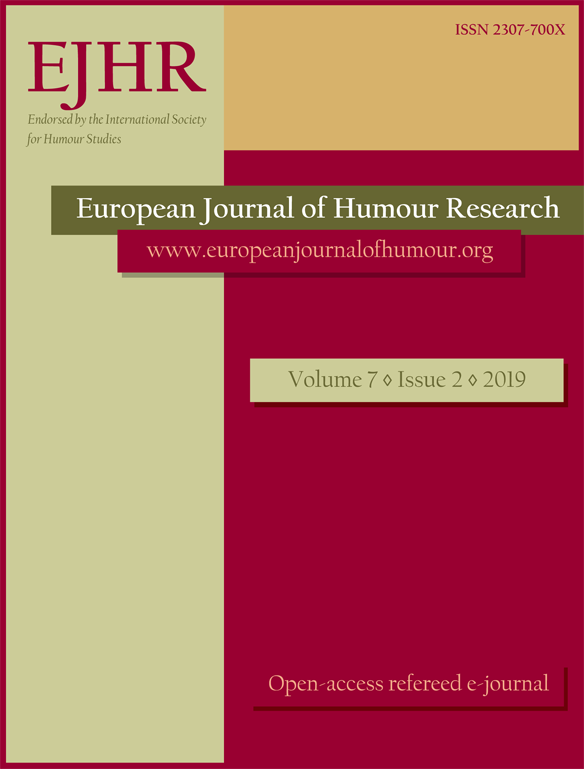Breaking frame and frame-shifting in Bassem
Youssef’s satirical TV show al-Bernāmeg
Breaking frame and frame-shifting in Bassem
Youssef’s satirical TV show al-Bernāmeg
Author(s): Mohamed MifdalSubject(s): Social Sciences, Language and Literature Studies, Theoretical Linguistics, Applied Linguistics, Communication studies, Sociology, Pragmatics, Cognitive linguistics, Descriptive linguistics
Published by: Krakowskie Towarzystwo Popularyzowania Wiedzy o Komunikacji Językowej Tertium
Keywords: satire; humor; frame breaking; frame-shifting; conceptual blending
Summary/Abstract: This paper reviews how humor is made in terms of three theoretical models. First, it draws onthe contribution of the structural semantics to the understanding of the text of the joke,especially the related notion of isotopy and the linear organization of the text of the joke.Second, this paper discusses humor in light of the Semantic Script Theory of Humor (SSTH),and the General Theory of Verbal Humor (GTVH). Third, this paper draws also on twopragmatic and discursive approaches, namely Grice’s cooperative principle, and Simpson’smodel of satire as a discourse. This paper argues that semantic incongruities and theirresolutions, as well as the violations of the cooperation principle can be best apprehended inlight of the frames theory as developed in social sciences by Erving Goffman and frameshiftingtheory as it has been developed by Seana Coulson. The aim of this paper is to revealthe mechanism used to produce humor and laughter in one of the most popular satirical showsin the Arab world, Bassem Youssef’s al-Bernāmeg. The focus is not only on what humor/satiredoes (ridicule, mockery, attack of targets, overstepping of boundaries…), but also on how itdoes it (violation of codes, breaking frames, frame-shifting, conceptual blending) and whythese discursive strategies are used (implications in light of historical and cultural context).This paper also argues that the generation of humor can be based broadly on breaking frames,which is inclusive of incongruity (both verbal and contextual), but studied in a multimodalcontent where incongruity is based on breaking and shattering frames that are constructed inverbal and visual forms. Humor generation is conducted through a continuous chain-likeprocess of building, shattering, and rebuilding frames. It also deals with the frame-shiftingand conceptual blending mechanisms at the level of interpretation and the construction of themeaning of humor. The aim is to account for the creative and flexible use of language forsatiric purposes and thus to enhance the ability of traditional frame-based systems, includingscript-opposition theory to account for such flexibility in light of context and with reference tobackground.
Journal: The European Journal of Humour Research
- Issue Year: 7/2019
- Issue No: 2
- Page Range: 30-43
- Page Count: 14
- Language: English

